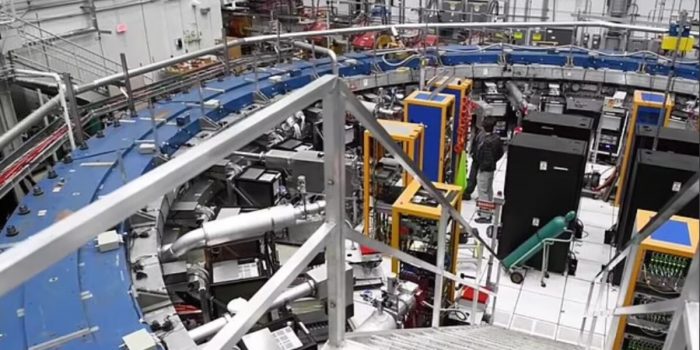Scientists are on the verge of identifying a new force of nature by observing the unusual behavior of a tiny subatomic particle. These scientists conducted experiments involving muons, particles similar to electrons, at the Fermilab in Batavia, Illinois. Muons, much like electrons, were accelerated through a large ring. By studying the way muons’ magnetic properties deviate from expectations, researchers hope to uncover a potential fifth force that cannot be explained by the Standard Model of particle physics. This mysterious force could reshape our understanding of the universe, given that muons naturally form when cosmic rays interact with Earth’s atmosphere.
This discovery builds upon previous research from 2021 but incorporates a significantly larger amount of data, bolstering the argument for “new physics.” The findings were shared in a research paper submitted to the journal Physical Review Letters by scientists from Fermilab.

Brendan Casey, a senior scientist at Fermilab and a study author, expressed the aim of uncovering interactions the muon has with currently unknown aspects. This could involve new particles, forces, dimensions, or characteristics of space-time. The study hints at potential alterations to the fundamental nature of space-time, a concept known as Lorentz invariance, which has far-reaching implications.
The realm of subatomic particles, smaller than atoms, has long intrigued scientists. The Standard Model, developed in the 1970s, has served as a foundation for explaining the interactions of these particles. It proposes that the universe is constructed from fundamental particles governed by four forces: the strong force, weak force, electromagnetic force, and gravitational force. While this model has proven accurate, it falls short in explaining certain phenomena like dark matter and matter-antimatter asymmetry.

To address these gaps, scientists have sought particles behaving differently from the Standard Model’s predictions. One such experiment, Muon g-2, took place at Fermilab. Muons, similar to electrons but much heavier, were subjected to a magnetic field, causing them to wobble. This wobbling was influenced by other subatomic particles present.

The recent findings, consistent with the 2021 results, deviated from Standard Model expectations. The muon’s magnetic moment, denoted by the letter “g,” was observed to be slightly higher than anticipated. This deviation was small yet significant, emphasizing the potential for new discoveries.
The research extends and improves upon a previous study conducted at Brookhaven National Laboratory in New York. While earlier results hinted at discrepancies in muon behavior, Fermilab’s subsequent experiments enhanced the evidence for these deviations.

The researchers are now working to incorporate three more years of data to attain a comprehensive measurement of the muon’s magnetic moment. Ultimately, the outcomes suggest the presence of a mysterious factor – perhaps unfamiliar particles or forces – comparable in importance to the landmark discovery of the Higgs Boson in 2012.
Dr. Rebecca Chislett from University College London, a co-author of the study, underscored the excitement surrounding these results. They not only confirm prior findings but also reinforce the team’s meticulous measurements of the muon’s anomalous magnetic moment. These advancements enable more precise testing of the Standard Model and offer deeper insights into the subatomic realm.


